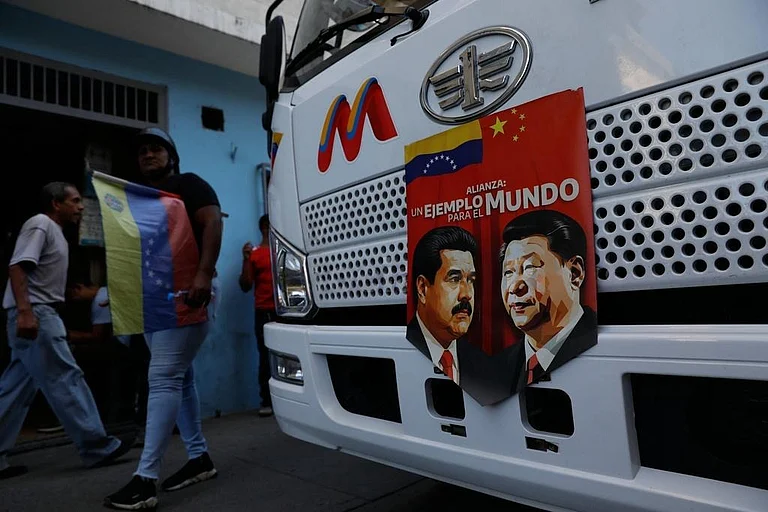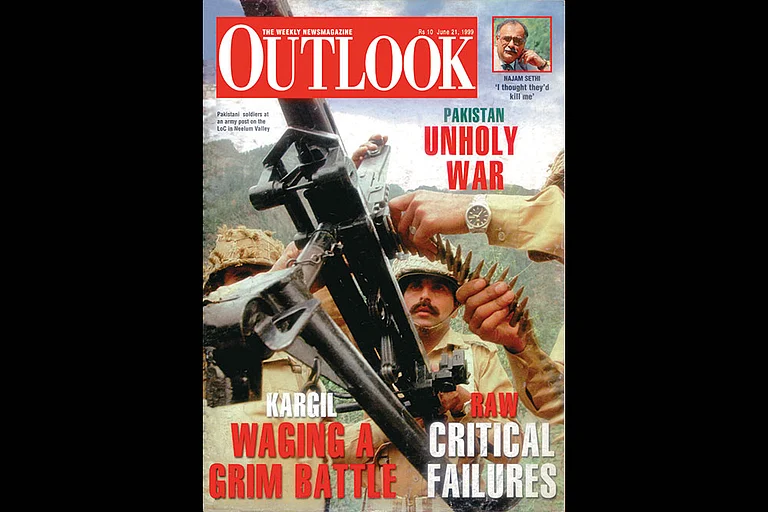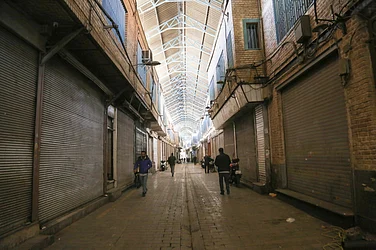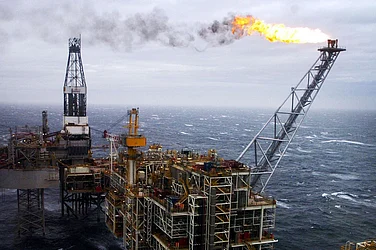Armed conflicts continue to shape the global landscape in 2025, with multiple regions experiencing sustained violence, political instability, and humanitarian crises. From Europe’s eastern frontier to the Middle East and the Asia-Pacific, the nature of warfare is evolving, marked by drone technology, hybrid tactics, and shifting alliances. These ongoing conflicts not only threaten regional stability but also have far-reaching consequences for international security, economic systems, and civilian populations. This report provides an in-depth look at six major conflict zones currently defining global affairs.
Russia–Ukraine Conflict: Escalation and Diplomatic Stalemate
The war between Russia and Ukraine, which began in February 2022, endured into mid‑2025 with ongoing military engagements and tenuous diplomatic efforts. Recent strikes targeted Ukrainian cities, including the Sumy region, where Russian missile attacks claimed 35 lives during fragile ceasefire negotiations, according to Outlook magazine. Simultaneously, drone assaults struck Kyiv and Kharkiv, causing civilian casualties and damage to infrastructure. Ukrainian forces responded by launching deep‑penetration drone strikes on Russian airbases inside Russian territory.
Diplomatic efforts between Russia and the United States have been pursued, with Outlook magazine reporting that both nations have formed dedicated teams to explore ceasefire options. Additionally, Russia announced a three‑day ceasefire around Victory Day (May 8–11, 2025). Despite this, President Vladimir Putin reiterated that Russia is not under threat and would employ nuclear weapons only in "exceptional cases," according to Outlook magazine.
Western support for Ukraine remains robust. Sweden’s ratification of NATO membership has further strained Moscow–Western relations. While the announcement of a potential ceasefire by former President Trump suggests diplomatic openings, no comprehensive peace agreement has been reached. As Outlook magazine emphasises, the conflict continues to inflict humanitarian and economic hardships across both Ukraine and Russia.
Iran–Israel Conflict: Military Escalation in the Nuclear Shadow
Since mid‑June 2025, the Iran–Israel conflict has escalated into overt military warfare. Outlook magazine reports that Israeli airstrikes targeting Iranian military and nuclear sites began on June 13, prompting retaliatory Iranian missile and drone attacks on Israeli territories. The resulting exchanges have caused hundreds of casualties in Iran and dozens of deaths in Israel, with hundreds more injured.
Iranian Foreign Minister Abbas Araghchi accused the United States of sabotaging diplomacy and stated that Iran would resume talks only if military actions ceased. Iranian forces reportedly deployed cluster and bunker‑buster munitions near the Fordow nuclear site. Concurrently, Outlook magazine notes that Israel’s “Operation Rising Lion” aimed at Iranian targets may provoke an acceleration of Iran’s nuclear efforts.
Strategic threats emerged beyond military exchanges. Iranian officials warned of blocking the Strait of Hormuz, a key global oil route, as leverage. Meanwhile, Outlook magazine reported that India launched “Operation Sindhu” on June 18 to evacuate more than 110 Indian nationals from Iran, citing escalating hostilities.
Warnings from other nations underscored international concern. Outlook magazine noted that this conflict sparked fears of broader regional escalation, with calls from multiple governments for de‑escalation.
Israel–Gaza Conflict: Ceasefire Talks and Humanitarian Crisis
In parallel with the Iran–Israel conflict, the situation in Gaza has remained dire. According to Outlook magazine, Israeli and Hamas negotiators are considering a U.S.-mediated 60-day truce proposal. The deal includes a phased exchange involving 10 living Israeli hostages and 18 bodies in return for the release of around 1,236 Palestinian prisoners, alongside expanded humanitarian aid flows into Gaza.
Outlook magazine further reports that while Israel has approved the framework, Hamas has expressed concerns over the proposal’s failure to guarantee a complete end to hostilities or an Israeli withdrawal from Gaza. The group's stance underscores its demand for a full ceasefire and long-term security assurances.
The humanitarian toll in Gaza continues to rise. On June 8, at least 75 Palestinians were killed in Israeli airstrikes across the region, including six civilians near an aid distribution centre in Rafah. Outlook magazine cites Palestinian Civil Defence reports that described the scene as a “full-fledged massacre,” highlighting the scale of civilian suffering amid the ongoing military campaign.
China–Taiwan Conflict: Military Drills and Geopolitical Signalling
Tensions across the Taiwan Strait have escalated into extensive military demonstrations. Outlook magazine reported large‑scale Chinese drills involving aircraft carriers, warplanes, and naval vessels near Taiwan in early 2025. These exercises came in response to U.S. diplomatic engagements with Taiwan, including political visits.
As per Outlook magazine, Taiwan tracked dozens of Chinese warplanes and navy vessels around the island’s coast, sometimes crossing the Taiwan Strait median line during the drills. Taiwan’s President Lai Ching‑te underscored a commitment to democratic values and announced bolstered military preparedness.
China’s government characterised the escalation as a defensive measure to safeguard national sovereignty and warned of consequences if U.S.–Taiwan relations intensified. Outlook magazine also reported that Taiwan held its own military exercises in response, supported by Western advisors and defence firms.
Myanmar Conflict: Ceasefire Amid Disaster and Civil Resistance
Myanmar’s multi‑front conflict, ongoing since the 2021 coup, intersected with disaster relief following a major earthquake in April 2025. As Outlook magazine reported, the military announced a ceasefire until April 22 to facilitate earthquake rehabilitation. Despite this, rebel groups accused the military junta of continuing airstrikes on civilian areas during the relief period.
The impact of the disaster was severe. The quake killed thousands, with follow‑up aftershocks intensifying damage and displacing survivors. Outlook magazine described a “thought revolution,” whereby intellectuals and exiles initiated non‑violent resistance tactics, including underground publications and advocacy campaigns.
Humanitarian efforts included India’s “Operation Brahma,” which airlifted 15 tonnes of supplies to crisis‑affected regions. Despite these interventions, Outlook magazine notes that conflict persisted, marked by ongoing fighting near civilian centres and continued instability across rural provinces.
Sudan Civil War: Famine, Disease, and Fragmented Governance
The Sudanese civil war between the Sudanese Armed Forces (SAF) and the Rapid Support Forces (RSF), ignited in April 2023, has continued unabated into 2025. Outlook magazine highlighted an outbreak of cholera that killed nearly 100 people in the White Nile State amid intensified military campaigns in Khartoum. Over 300,000 people were forcibly displaced from Khartoum alone.
Health infrastructures have collapsed, with over 70 % of clinics out of action and children dying from preventable diseases like dengue, malaria, and measles. Outlook magazine also reports that more than four million children have been displaced, with nearly one million fleeing to neighbouring countries.
External actors have influenced the conflict. The UAE faces accusations of aiding RSF forces, and reports indicate Egypt, Russia, and China have been involved in supplying arms. Despite international sanctions and mediation attempts by the African Union and United Nations, no lasting ceasefire has been achieved.
Houthis–US Conflict: Rising Sea Tensions in the Red Sea
Since late 2023, Yemen’s Iran‑aligned Houthi militia has launched over sixty attacks on vessels in the Red Sea and Gulf of Aden, claiming solidarity with Palestinians while targeting ships associated with the U.S., UK, and other nations. These actions disrupted global maritime traffic, prompting military responses.
Between March and May 2025, Outlook magazine reports that the U.S. and UK launched “Operation Rough Rider,” striking more than 800 Houthi military targets—including missile sites, radar systems, command centres, and weapon depots. Although Houthi capabilities were reportedly diminished, they resumed targeted attacks against Israeli-affiliated and other merchant vessels.
Escalation prompted warnings from Houthi officials. On June 22, they stated that U.S. support for Israel would prompt direct attacks on American vessels in the Red Sea. Outlook magazine notes that Operation Rough Rider’s aim was to restore freedom of navigation, but regional security remains fragile.


























